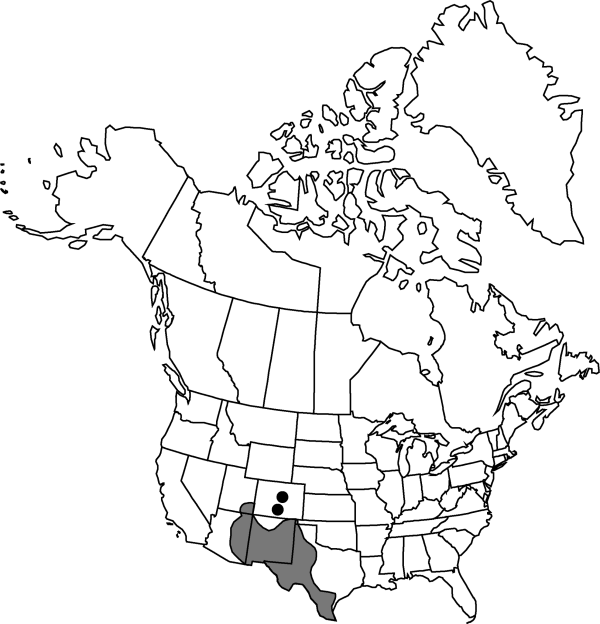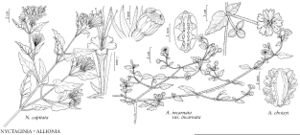Difference between revisions of "Allionia incarnata var. incarnata"
Illustrated
Synonyms: Allionia cristata (Standley) Standley Allionia incarnata var. nudata
imported>Volume Importer |
imported>Volume Importer |
||
| Line 54: | Line 54: | ||
|publication year= | |publication year= | ||
|special status=Illustrated | |special status=Illustrated | ||
| − | |source xml=https:// | + | |source xml=https://bitbucket.org/aafc-mbb/fna-data-curation/src/2e0870ddd59836b60bcf96646a41e87ea5a5943a/coarse_grained_fna_xml/V4/V4_115.xml |
|genus=Allionia | |genus=Allionia | ||
|species=Allionia incarnata | |species=Allionia incarnata | ||
Latest revision as of 21:56, 5 November 2020
Inflorescences: peduncle 3–15(–30) mm, sparingly glandular-puberulent, sparsely to densely spreading-villous; flower cluster 5–10(–12) mm diam. in anthesis; abaxial perianth limb 3–8(–10) mm. Fruits 3–5 mm.
Phenology: Flowering year-round, primarily early spring–late fall.
Habitat: Open arid areas, usually on sandy or gravelly soils, sometimes on gypsum
Elevation: 0-1600[-2500] m
Distribution

Ariz., Colo., N.Mex., Okla., Tex., Utah, Mexico, West Indies, Central America, South America.
Discussion
The variety is extremely variable with regard to robustness, density of pubescence, and size of flowers. B. L. Turner (1994) noted that North American collections are indistinguishable taxonomically from South American collections.
Selected References
None.
Lower Taxa
None.
